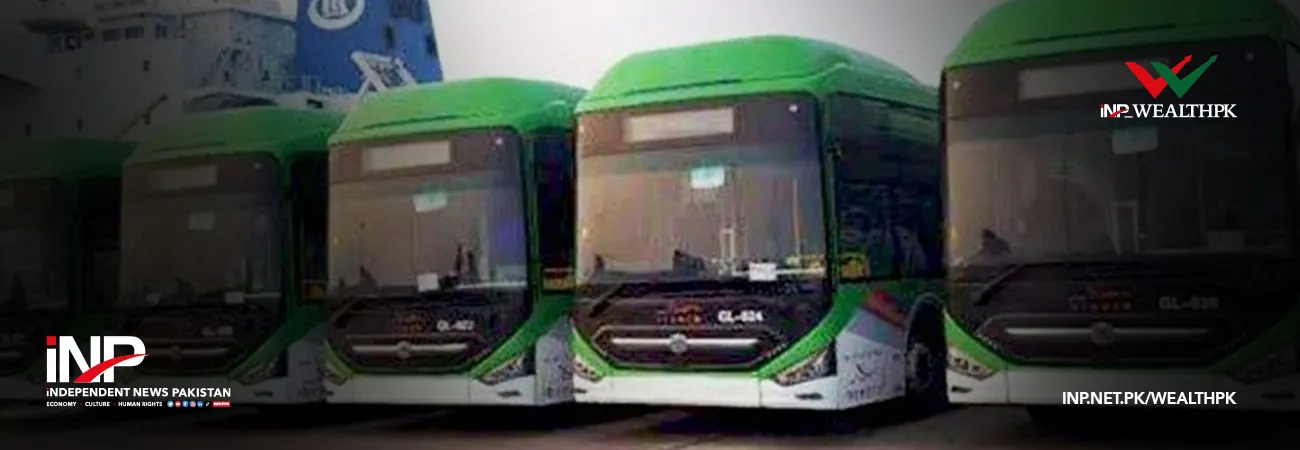INP-WealthPk
By Abdul Wajid Khan ISLAMABAD, Feb. 28 (INP-WealthPK): The State Bank of Pakistan (SBP) has said that the special economic zones (SEZs) under the China-Pakistan Economic Corridor (CPEC) can play a pivotal role in the promotion of industrialisation in the country. In its annual report on the State of Pakistan’s Economy, the central bank says as Pakistan enters the second phase of CPEC, focusing on business-to-business cooperation the SEZs can play a pivotal role in attracting investment, promoting industrialisation, and increasing market accessibility as well as regional connectivity. However, the success of SEZs depends partly on establishing a robust regulatory and institutional framework, with a focus on exploiting the country's competitive advantage. The report provides a detailed overview of the SEZ landscape in the country and offers policy recommendations to ensure that the SEZs achieve their desired objective of stimulating foreign and domestic investments. The report adds that the government has introduced a number of reforms to improve the investment climate in the country over the past two years and further efforts to this end include harnessing the potential of one investment policy tool, and that is SEZs. Currently, 22 SEZs have been approved, of which 21 have been notified. 13 of these 22 approved SEZs had previously existed as Industrial Estates and Industrial Parks, whereas nine SEZs have been approved under CPEC, of which four have been given priority status. However, the SEZs’ potential is constrained by the fact that they are not insulated from the overall business and investment climate of the country, vis-à-vis complex processes and procedures for approvals, registrations, and licences; legal challenges; and insufficient availability of skilled labour. In addition, challenges to one-stop shops, a weak framework for long-term operational sustainability of the zones, technical hurdles in the financing of zone enterprises, and weak monitoring mechanisms, also pose challenges to the potential success of SEZs, the report adds. Going forward, for the zones to prosper, it is imperative to ensure swifter provision of utilities and infrastructure. Also, a well-designed institutional, legal and infrastructural framework is required to provide a favourable business environment. Lessons from China’s experience The SEZs are starting to gain prominence in Pakistan, given the focus of second phase of the CPEC on enhancing business-to-business cooperation between the two countries. The SBP report further highlights that China had established four zones in the Guangdong and Fujian provinces in 1980. And just after four years, the country declared 14 coastal cities as Economic and Technological Development Zones (ETDZs) with incentives similar to those for modern-day SEZs. The provinces with these zones attracted around 70% of total foreign direct investment in China during 1979-1991 period. The country also progressively transitioned to High-tech Industrial Development Zones (HIDZs), which promoted technology and innovation. Following the success of China, SEZs became a popular tool for investment policy. From 176 SEZs in 47 countries in 1986, the total number of SEZs increased to 3,500 across 130 countries in 2006. By 2018, this number had reached 5,400 in 147 countries, with another 500 new projects expected to be in the pipeline. Around 89% of all the economic zones are located in developing countries, the SBP report points out. As documented in the World Investment Report 2019, current zone programmes in China show that SEZs account for over 80% of cumulative FDI. To create a successful special economic zone, a comprehensive strategy based on multiple factors is required. While highlighting the factors behind the success of SEZs, the 2019 report says that a starting point for a successful SEZ is an explicitly stated clear set of objectives, which depends on the characteristics, comparative advantage, and location of that SEZ. The SEZs in China, which are amongst the world’s most successful, have clear benchmarks and goals. For SEZs to be successful, it is also imperative to have separate laws and institutional set-ups governing SEZs within the national legal framework. For instance, the report adds, China regulates SEZs with a decentralised structure comprising three layers: national laws providing policy directives; provincial laws factoring varying conditions within provinces; and individual SEZ laws to account for the uniqueness of every SEZ. The infrastructure – encompassing roads, railways, water, electricity, health, education, and training facilities for zone residents – is also a critical success factor. Fiscal incentives like tax holidays, exemptions on dividends on income tax, and duty-free imports, positively correlate with the zone’s performance and help it attract initial investment. Mechanism for dispute resolutions is an important feature behind the success of several SEZs, because it helps avoid escalation of disagreements and lengthy litigation. Strategic location is also very crucial for a zone’s success. A signature example of this is Shenzhen, China, which became a major manufacturing base from a fishing village after an SEZ was set up in the region. So, by learning from China’s successful experience in the field, it is hoped the Pakistani government will take steps on immediate basis to resolve all challenges the SEZs to fast-track industrialisation in the country. SEZs under CPEC have great significance for a bright future of Pakistan as they will contribute tangibly to import substitution and increasing exports.













